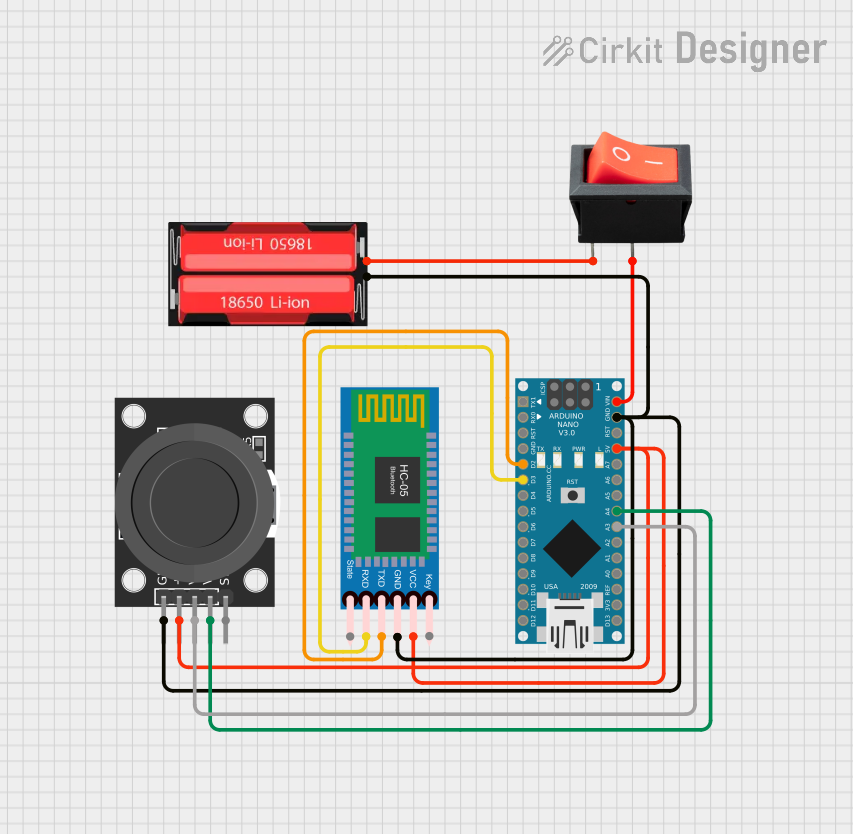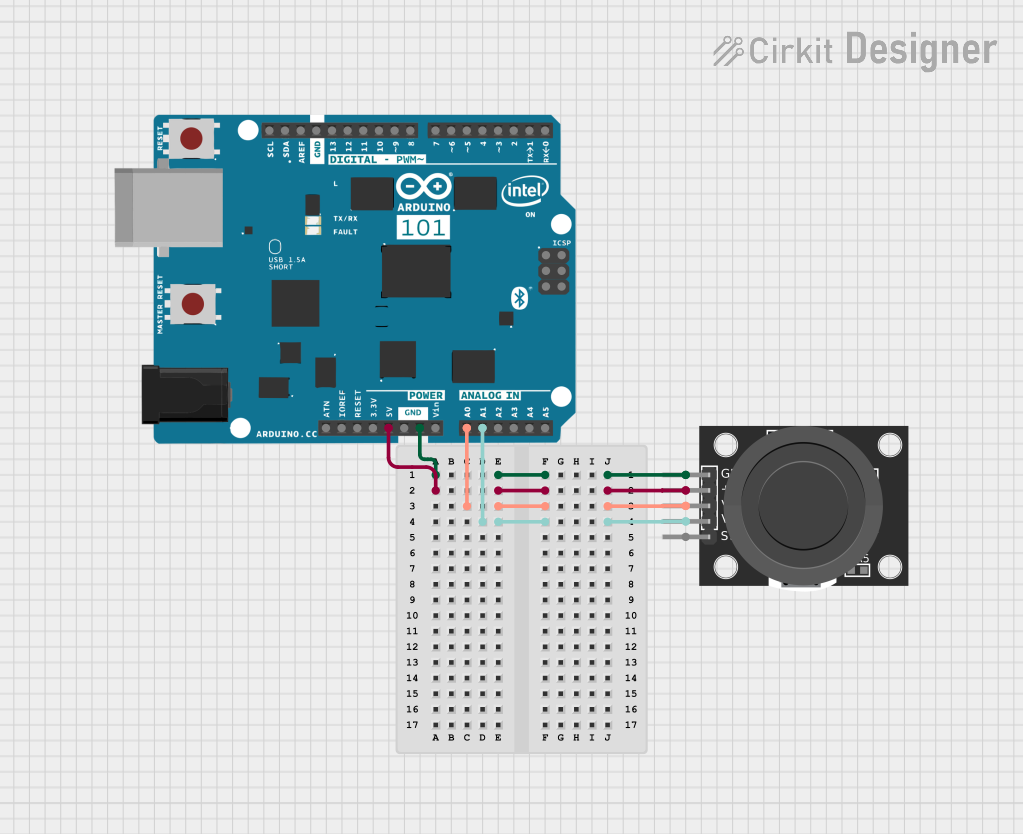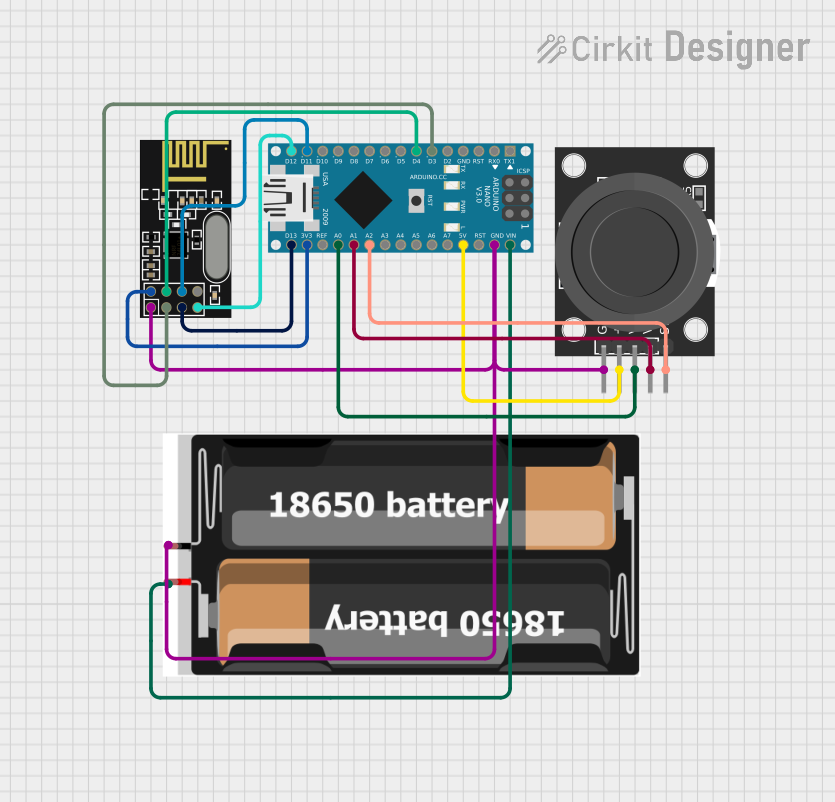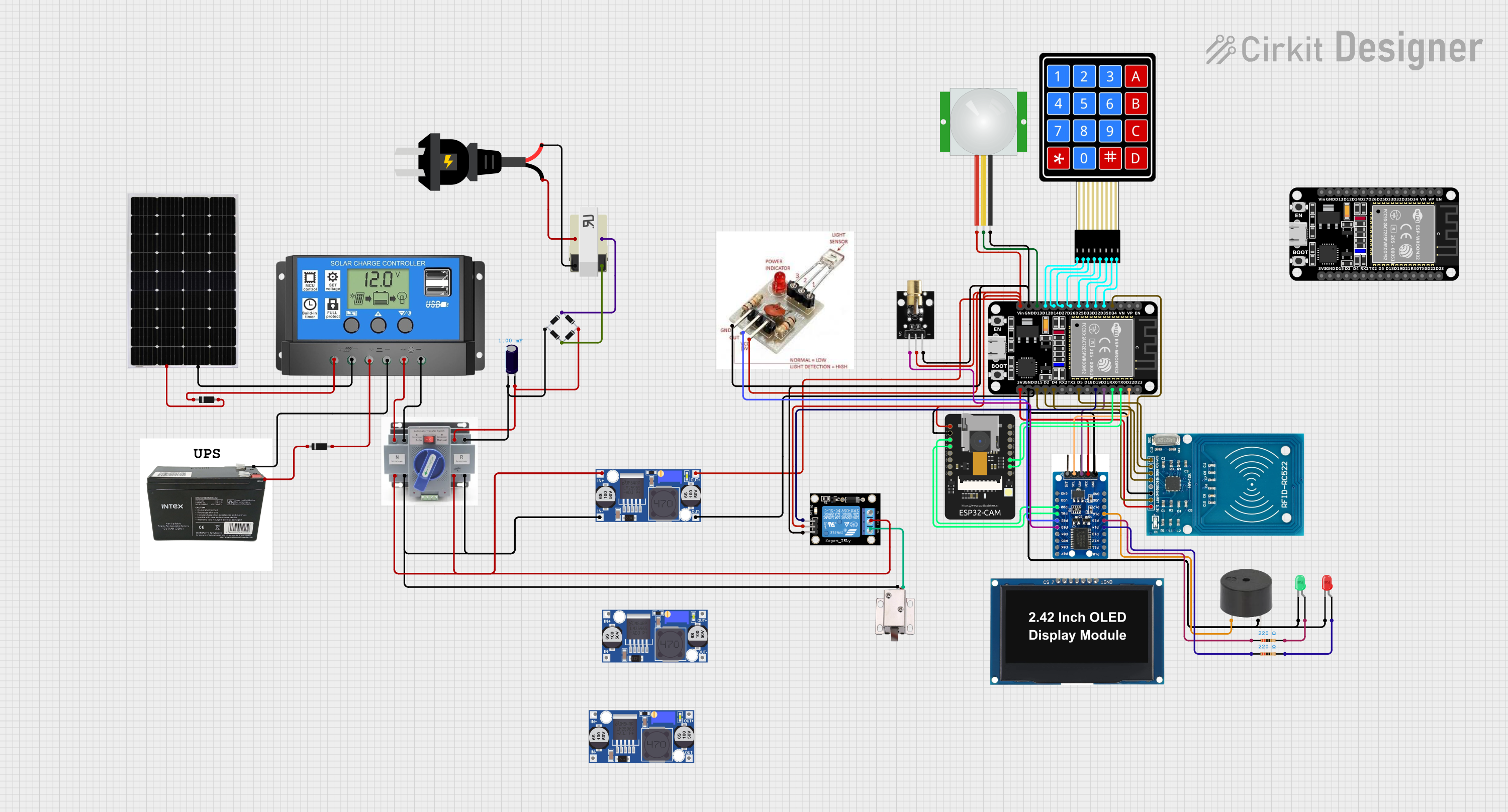
How to Use KY-017: Examples, Pinouts, and Specs

 Design with KY-017 in Cirkit Designer
Design with KY-017 in Cirkit DesignerIntroduction
The KY-017 is a temperature sensor module that utilizes the LM35 temperature sensor. It provides an analog output voltage that is directly proportional to the temperature in degrees Celsius. The module is designed for ease of use, making it ideal for temperature monitoring applications in various projects. Its compact size and simple interface make it suitable for integration with microcontrollers, such as Arduino, Raspberry Pi, and other development boards.
Explore Projects Built with KY-017

 Open Project in Cirkit Designer
Open Project in Cirkit Designer
 Open Project in Cirkit Designer
Open Project in Cirkit Designer
 Open Project in Cirkit Designer
Open Project in Cirkit Designer
 Open Project in Cirkit Designer
Open Project in Cirkit DesignerExplore Projects Built with KY-017

 Open Project in Cirkit Designer
Open Project in Cirkit Designer
 Open Project in Cirkit Designer
Open Project in Cirkit Designer
 Open Project in Cirkit Designer
Open Project in Cirkit Designer
 Open Project in Cirkit Designer
Open Project in Cirkit DesignerCommon Applications and Use Cases
- Environmental temperature monitoring
- Home automation systems
- Weather stations
- Industrial temperature sensing
- Educational projects and prototyping
Technical Specifications
The KY-017 module is based on the LM35 temperature sensor, which offers high accuracy and linear output. Below are the key technical details:
| Parameter | Value |
|---|---|
| Operating Voltage | 4V to 30V |
| Output Voltage Range | 0V to 1.5V (for 0°C to 150°C) |
| Temperature Range | 0°C to 100°C (module-specific) |
| Accuracy | ±0.5°C (at 25°C) |
| Output Type | Analog |
| Dimensions | 18mm x 10mm x 8mm |
Pin Configuration and Descriptions
The KY-017 module has three pins for interfacing:
| Pin | Name | Description |
|---|---|---|
| 1 | VCC | Power supply pin (4V to 30V) |
| 2 | GND | Ground pin |
| 3 | OUT | Analog output voltage proportional to temperature |
Usage Instructions
How to Use the KY-017 in a Circuit
- Power the Module: Connect the
VCCpin to a 5V power supply and theGNDpin to the ground of your circuit. - Read the Output: Connect the
OUTpin to an analog input pin of your microcontroller to read the temperature as an analog voltage. - Convert Voltage to Temperature: The LM35 outputs 10mV per degree Celsius. For example, an output of 250mV corresponds to 25°C.
Important Considerations and Best Practices
- Ensure the power supply voltage is within the specified range (4V to 30V) to avoid damaging the module.
- Place the sensor in a location free from direct heat sources or airflow to obtain accurate readings.
- Use a decoupling capacitor (e.g., 0.1µF) between
VCCandGNDto reduce noise in the output signal. - If using the module in a noisy environment, consider shielding the sensor or using a low-pass filter.
Example: Connecting KY-017 to Arduino UNO
Below is an example of how to connect and read data from the KY-017 module using an Arduino UNO:
Circuit Connections
- Connect the
VCCpin of the KY-017 to the 5V pin of the Arduino. - Connect the
GNDpin of the KY-017 to the GND pin of the Arduino. - Connect the
OUTpin of the KY-017 to the A0 analog input pin of the Arduino.
Arduino Code
// KY-017 Temperature Sensor Example with Arduino UNO
// Reads the analog output from the KY-017 and converts it to temperature in °C.
const int sensorPin = A0; // KY-017 OUT pin connected to Arduino A0
float voltage; // Variable to store the sensor output voltage
float temperature; // Variable to store the calculated temperature
void setup() {
Serial.begin(9600); // Initialize serial communication at 9600 baud
}
void loop() {
int sensorValue = analogRead(sensorPin); // Read the analog value (0-1023)
// Convert the analog value to voltage (assuming 5V reference)
voltage = sensorValue * (5.0 / 1023.0);
// Convert the voltage to temperature (10mV per °C for LM35)
temperature = voltage * 100.0;
// Print the temperature to the Serial Monitor
Serial.print("Temperature: ");
Serial.print(temperature);
Serial.println(" °C");
delay(1000); // Wait for 1 second before the next reading
}
Troubleshooting and FAQs
Common Issues and Solutions
No Output or Incorrect Readings
- Cause: Incorrect wiring or loose connections.
- Solution: Double-check the connections and ensure the
VCC,GND, andOUTpins are properly connected.
Fluctuating Temperature Readings
- Cause: Electrical noise or unstable power supply.
- Solution: Add a decoupling capacitor (e.g., 0.1µF) between
VCCandGNDto stabilize the power supply.
Output Voltage Does Not Match Expected Temperature
- Cause: Incorrect voltage reference or calculation.
- Solution: Verify the Arduino's analog reference voltage and ensure the calculation formula is correct.
Sensor Overheating
- Cause: Excessive power supply voltage.
- Solution: Ensure the supply voltage is within the specified range (4V to 30V).
FAQs
Q1: Can the KY-017 measure negative temperatures?
A1: No, the LM35 sensor used in the KY-017 module is designed to measure temperatures starting from 0°C. For negative temperature measurements, additional circuitry or a different sensor is required.
Q2: Can I use the KY-017 with a 3.3V microcontroller?
A2: Yes, the KY-017 can operate at 3.3V, but the output voltage range will be lower. Ensure your microcontroller's ADC can accurately read the reduced voltage range.
Q3: How do I improve the accuracy of the sensor?
A3: Place the sensor in a stable environment, away from heat sources or airflow. Additionally, use a high-resolution ADC for better precision.
Q4: Is the KY-017 waterproof?
A4: No, the KY-017 is not waterproof. For outdoor or wet environments, consider using a waterproof temperature sensor like the DS18B20.